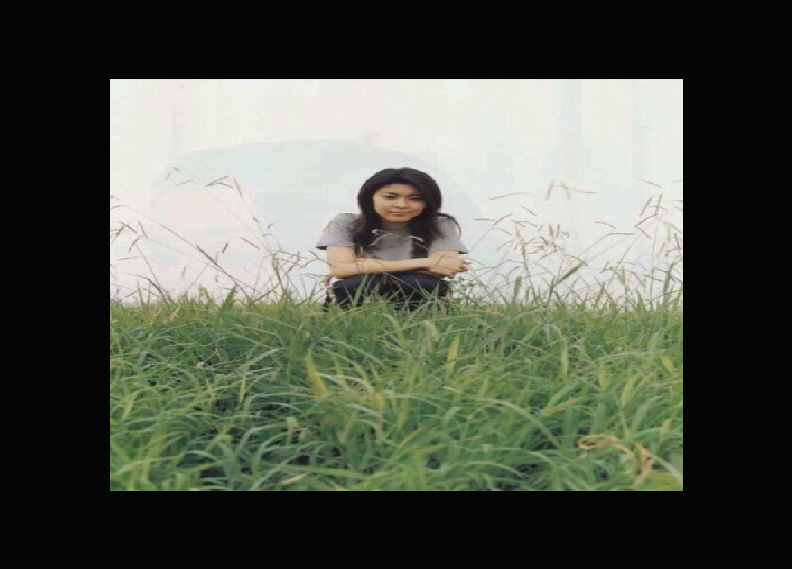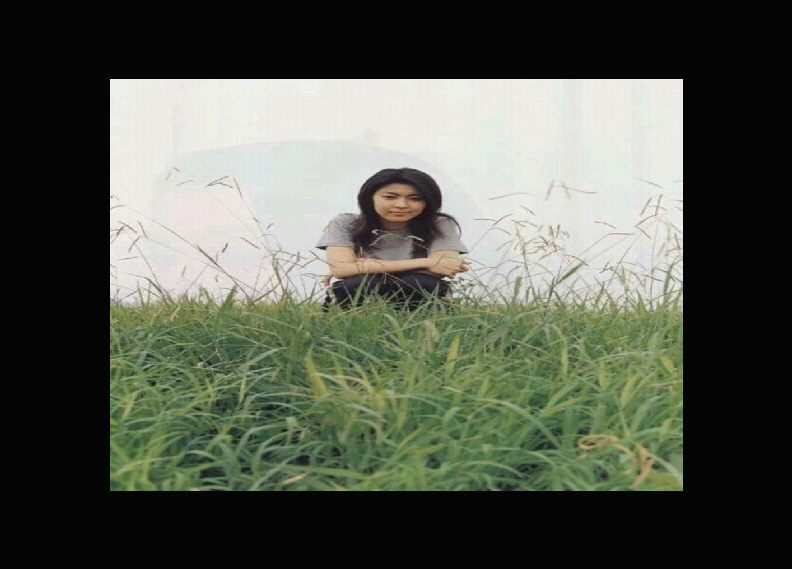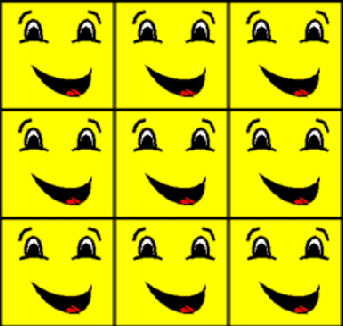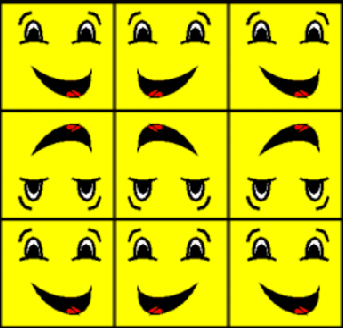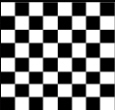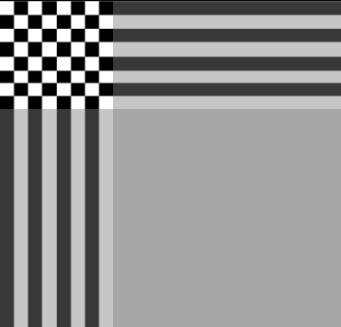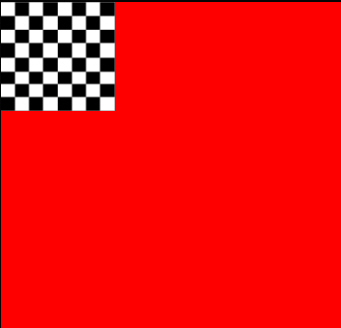-- 发布时间:12/2/2008 10:15:00 AM
-- 纹理映射基础(2)
最近点采样
最近点采样是4种过滤方式中速度最快但效果最差的过滤方式。Direct3D计算得到的纹理元素地址通常是一个浮点数值,而非整数的纹理下标值,当使用最近点采样时,Direct3D会复制与这个浮点值地址最接近的整数地址的纹理元素的颜色。
设置最近点采样的具体方法如下:调用IDirect3DDevice9::SetSamplerState(),可分别设置纹理过滤的放大过滤器和缩小过滤器。将第一个参数设置为纹理过滤器关联的纹理层序号(0~7)。如果要设置放大过滤器,第二个参数设为D3DSAMP_MAGFILTER,如果要设置缩小过滤器,第二个参数设为D3DSAMP_MINFILTER。第三个参数可设为表示最近点采样的枚举常量D3DTEXF_POINT。下列代码将纹理层0的纹理过滤方式设置为最近点采样。
g_device->SetSamplerState(0, D3DSAMP_MAGFILTER, D3DTEXF_POINT);
g_device->SetSamplerState(0, D3DSAMP_MINFILTER, D3DTEXF_POINT);
如果纹理的大小和屏幕图元的实际大小将近,那么采用最近点采样方法对图像质量的影响不大。但是,如果大小相差太多,就会降低图像精度,从而影响图像质量,出现色块或闪烁的失真现象。
线性纹理过滤
线性纹理过滤是目前使用最广泛的纹理过滤方法。它与最近点采样相比,能有效地提高图像的显示质量,并且对系统性能影响不大。线性纹理过滤取得与计算得到的纹理元素的浮点地址最接近的上、下、左、右4个纹理元素,对这4个纹理元素进行加权平均,得到最终显示的颜色值。
与设置最近点采样的方法相似,调用函数IDirect3DDevice9::SetSamplerState()设置线性纹理过滤,所不同的是第三个参数设置为D3DTEXF_LINEAR。下面的代码将纹理层0的放大和缩小过滤器设置为线性纹理过滤。
g_device->SetSamplerState(0, D3DSAMP_MAGFILTER, D3DTEXF_LINEAR);
g_device->SetSamplerState(0, D3DSAMP_MINFILTER, D3DTEXF_LINEAR);
因为是在单一纹理层上的线性过滤,而且是x、y方向上的线性过滤,所以称为双线性纹理过滤。目前大多数显卡都为线性纹理过滤进行了优化,所以使用线性纹理过滤一方面可以获得较好的图形质量,另一方面对程序性能影响不大。
各项异性纹理过滤
当三维物体表面与投影平面不平行时,它在屏幕上的投影会有拉长或扭曲,这种现象称为各项异性(anisotropy)。当一个各向异性图元的像素映射到纹理元素时,它的形状发生扭曲。Direct3D根据屏幕像素反向转换到纹理元素的延长度,决定各项异性程度。
要使用各项异性纹理过滤,还应当设置最大各项异性程度值。通过将函数IDirect3DDevive9::SetSamplerState()的第一个参数设为纹理层索引,第二个参数设为D3DSAMP_MAXANISOTOPY,第三个参数设为大于1的任何值,可以完成最大各项异性程度值的设置。下面的示例代码指定了最大各项异性值为4。
g_device->SetSamplerState(0, D3DSAMP_MAGFILTER, D3DTEXF_ANISOTROPIC);
g_device->SetSamplerState(0, D3DSAMP_MINFILTER, D3DTEXF_ANISOTROPIC);
g_device->SetSamplerState(0, D3DSAMP_MAXANISOTROPY, 4);
最大各项异性程度值D3DSAMP_MAXANISOTROPY为1时,表示禁用各项异性过滤。一般说来,其值越大,图像效果越好,计算量越大,速度越慢。需要注意的是,在设置最大各项异性之前,应调用IDirect3D9::GetDeviceCaps()函数,查询当前设备支持的Direct3D特性,获取当前设备支持的最大各项异性度的取值范围,具体代码如下:
DWORD get_max_anisotropy(IDirect3DDevice9* device){ D3DCAPS9 caps; device->GetDeviceCaps(&caps);
return caps.MaxAnisotropy;}
纹理过滤方式示例程序
按下数字键“1”使用最近点采样纹理过滤方式,按下数字键“2”使用线性纹理过滤方式,按下数字键“3”使用各项异性纹理过滤方式。
源程序:
#include <d3dx9.h>
#pragma warning(disable : 4127)
#define CLASS_NAME "GameApp"
#define release_com(p) do { if(p) { (p)->Release(); (p) = NULL; } } while(0)
IDirect3D9* g_d3d;
IDirect3DDevice9* g_device;
IDirect3DVertexBuffer9* g_vertex_buffer;
IDirect3DTexture9* g_texture;
struct sCustomVertex
{
float x, y, z;
float u, v;
};
#define D3DFVF_CUSTOM_VERTEX (D3DFVF_XYZ | D3DFVF_TEX1)
void setup_matrices()
{
// build world matrix
D3DXMATRIX mat_world;
D3DXMatrixIdentity(&mat_world);
g_device->SetTransform(D3DTS_WORLD, &mat_world);
// setup view matrix
D3DXVECTOR3 eye(0.0f, 0.0f, -8.0f);
D3DXVECTOR3 at(0.0f, 0.0f, 0.0f);
D3DXVECTOR3 up(0.0f, 1.0f, 0.0f);
D3DXMATRIX mat_view;
D3DXMatrixLookAtLH(&mat_view, &eye, &at, &up);
g_device->SetTransform(D3DTS_VIEW, &mat_view);
// setup projection matrix
D3DXMATRIX mat_proj;
D3DXMatrixPerspectiveFovLH(&mat_proj, D3DX_PI/4, 1.0f, 1.0f, 100.0f);
g_device->SetTransform(D3DTS_PROJECTION, &mat_proj);
}
bool init_graphics()
{
if(FAILED(D3DXCreateTextureFromFile(g_device, "texture.jpg", &g_texture)))
{
MessageBox(NULL, "Create texture failed!", "ERROR", MB_OK);
return false;
}
sCustomVertex vertices[] =
{
{ -3, -3, 0.0f, 0.0f, 1.0f},
{ -3, 3, 0.0f, 0.0f, 0.0f},
{ 3, -3, 0.0f, 1.0f, 1.0f},
{ 3, 3, 0.0f, 1.0f, 0.0f }
};
g_device->CreateVertexBuffer(sizeof(vertices), 0, D3DFVF_CUSTOM_VERTEX, D3DPOOL_MANAGED, &g_vertex_buffer, NULL);
void* ptr;
g_vertex_buffer->Lock(0, 0, (void**)&ptr, 0);
memcpy(ptr, vertices, sizeof(vertices));
g_vertex_buffer->Unlock();
return true;
}
bool init_d3d(HWND hwnd)
{
g_d3d = Direct3DCreate9(D3D_SDK_VERSION);
if(g_d3d == NULL)
return false;
D3DPRESENT_PARAMETERS d3dpp;
ZeroMemory(&d3dpp, sizeof(d3dpp));
d3dpp.Windowed = TRUE;
d3dpp.SwapEffect = D3DSWAPEFFECT_DISCARD;
d3dpp.BackBufferFormat = D3DFMT_UNKNOWN;
if(FAILED(g_d3d->CreateDevice(D3DADAPTER_DEFAULT, D3DDEVTYPE_HAL, hwnd, D3DCREATE_SOFTWARE_VERTEXPROCESSING,
&d3dpp, &g_device)))
{
return false;
}
if(! init_graphics())
return false;
setup_matrices();
g_device->SetRenderState(D3DRS_LIGHTING, FALSE);
return true;
}
void cleanup()
{
release_com(g_texture);
release_com(g_vertex_buffer);
release_com(g_device);
release_com(g_d3d);
}
void render()
{
g_device->Clear(0, NULL, D3DCLEAR_TARGET, D3DCOLOR_XRGB(5, 5, 5), 1.0f, 0);
g_device->BeginScene();
g_device->SetTexture(0, g_texture);
g_device->SetStreamSource(0, g_vertex_buffer, 0, sizeof(sCustomVertex));
g_device->SetFVF(D3DFVF_CUSTOM_VERTEX);
g_device->DrawPrimitive(D3DPT_TRIANGLESTRIP, 0, 2);
g_device->EndScene();
g_device->Present(NULL, NULL, NULL, NULL);
}
LRESULT WINAPI WinProc(HWND hwnd, UINT msg, WPARAM wParam, LPARAM lParam)
{
switch(msg)
{
case WM_KEYDOWN:
switch(wParam)
{
case VK_ESCAPE:
DestroyWindow(hwnd);
break;
case 49: // press key "1", use nearest point texture filter mode
g_device->SetSamplerState(0, D3DSAMP_MAGFILTER, D3DTEXF_POINT);
g_device->SetSamplerState(0, D3DSAMP_MINFILTER, D3DTEXF_POINT);
break;
case 50: // press key "2", use linear texture filter mode
g_device->SetSamplerState(0, D3DSAMP_MAGFILTER, D3DTEXF_LINEAR);
g_device->SetSamplerState(0, D3DSAMP_MINFILTER, D3DTEXF_LINEAR);
break;
case 51: // press key "3", use anisotropy texture filter mode
g_device->SetSamplerState(0, D3DSAMP_MAGFILTER, D3DTEXF_ANISOTROPIC);
g_device->SetSamplerState(0, D3DSAMP_MINFILTER, D3DTEXF_ANISOTROPIC);
g_device->SetSamplerState(0, D3DSAMP_MAXANISOTROPY, 8);
break;
}
break;
case WM_DESTROY:
PostQuitMessage(0);
return 0;
}
return DefWindowProc(hwnd, msg, wParam, lParam);
}
int WINAPI WinMain(HINSTANCE inst, HINSTANCE, LPSTR, INT)
{
WNDCLASSEX wc;
wc.cbSize = sizeof(WNDCLASSEX);
wc.style = CS_CLASSDC;
wc.lpfnWndProc = WinProc;
wc.cbClsExtra = 0;
wc.cbWndExtra = 0;
wc.hInstance = inst;
wc.hIcon = NULL;
wc.hCursor = NULL;
wc.hbrBackground = NULL;
wc.lpszMenuName = NULL;
wc.lpszClassName = CLASS_NAME;
wc.hIconSm = NULL;
if(! RegisterClassEx(&wc))
return -1;
HWND hwnd = CreateWindow(CLASS_NAME, "Direct3D App", WS_OVERLAPPEDWINDOW, 200, 100, 800, 600,
NULL, NULL, wc.hInstance, NULL);
if(hwnd == NULL)
return -1;
if(init_d3d(hwnd))
{
ShowWindow(hwnd, SW_SHOWDEFAULT);
UpdateWindow(hwnd);
MSG msg;
ZeroMemory(&msg, sizeof(msg));
while(msg.message != WM_QUIT)
{
if(PeekMessage(&msg, NULL, 0, 0, PM_REMOVE))
{
TranslateMessage(&msg);
DispatchMessage(&msg);
}
render();
Sleep(10);
}
}
cleanup();
UnregisterClass(CLASS_NAME, wc.hInstance);
return 0;
}

